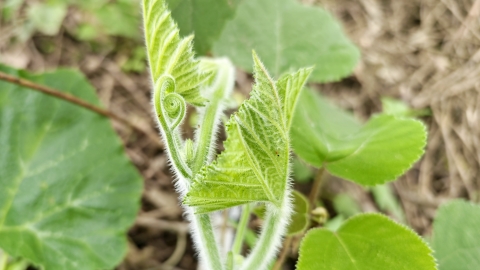What are the benefits and drawbacks of consuming pumpkin tips (the tender shoots of the pumpkin plant)?
Pumpkin tips, as a vegetable, have both unique nutritional value and health benefits, as well as some aspects that require attention. Their benefits are mainly reflected in rich nutrient content, promoting digestion, enhancing immunity, improving vision, and beautifying the skin. However, potential drawbacks include high oxalic acid content, possible interference with calcium absorption, nutrient loss due to improper cooking methods, allergic reactions in some individuals, and indigestion. The detailed analysis is as follows:

I. Benefits
1. Rich in nutrients: Pumpkin tips are rich in vitamin A, vitamin C, vitamin E, and various minerals such as calcium, iron, and zinc. These nutrients help maintain normal physiological functions, enhance immunity, and promote metabolism.
2. Promotes digestion: Pumpkin tips contain a considerable amount of dietary fiber, which can stimulate intestinal peristalsis, increase stool bulk, help relieve constipation, and improve digestive health.
3. Improves vision: Pumpkin tips are rich in beta-carotene, which can be converted into vitamin A in the body and plays an important role in eye health. Vitamin A protects the retina, prevents night blindness, and improves vision.
4. Beautifies the skin: The vitamin C and vitamin E in pumpkin tips have antioxidant properties that can remove free radicals in the body, reduce oxidative skin damage, delay aging, and make the skin smoother and more delicate.
5. Enhances immunity: Various nutrients in pumpkin tips, such as vitamin C, vitamin E, and minerals, can enhance the body's immune function, improve resistance, and help the body fight diseases.
II. Drawbacks
1. High oxalic acid content: Pumpkin tips contain a certain amount of oxalic acid, which may combine with calcium to form calcium oxalate, affecting calcium absorption. Long-term excessive consumption may increase the risk of kidney stones, especially for individuals already at risk of kidney stones.
2. May affect calcium absorption: Due to the high oxalic acid content in pumpkin tips, consuming large amounts of calcium simultaneously may reduce calcium absorption. It is recommended to avoid consuming pumpkin tips with high-calcium foods.
3. Improper cooking methods may cause nutrient loss: Although pumpkin tips are rich in nutrients, improper cooking methods, such as prolonged high-temperature boiling, may lead to nutrient loss. It is recommended to use cooking methods such as stir-frying or steaming to preserve more nutrients.
4. Allergic reactions in some individuals: Although pumpkin tips are a common vegetable, some people may be allergic to them. Allergic reactions may manifest as skin itching, swelling, difficulty breathing, etc. If allergic symptoms occur, stop consumption immediately and seek medical attention.
5. Difficult to digest: Pumpkin tips contain a large amount of dietary fiber, which is beneficial for digestion, but may cause gastrointestinal discomfort such as bloating and diarrhea in individuals with weak digestion. Such individuals are advised to consume in moderation.
To fully utilize the nutritional benefits of pumpkin tips while minimizing potential adverse effects, it is recommended to consume pumpkin tips in a manner suitable to your individual health condition, pay attention to cooking methods, avoid consuming with high-calcium foods, and monitor your body's reactions.




